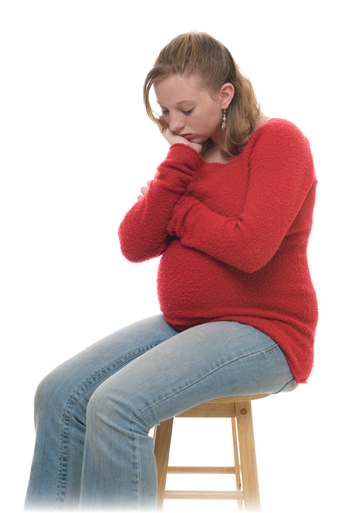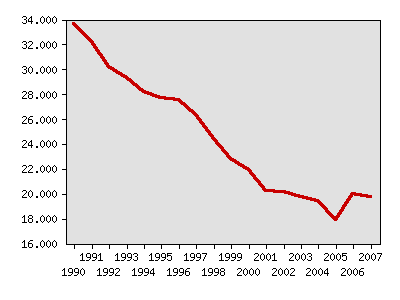Indicator 3: Teen Pregnancy


Rationale: Supportive and nurturing relationships promote children's emotional security, social development and academic achievement.
Teenage mothers, many of whom are single, face difficulties in providing a stable, supportive environment for their children. Teenage mothers can find it difficult to support a child. Only about half complete high school, limiting future job prospects. There is a high rate of welfare participation among the group.
About this indicator: Minnesota's teen pregnancy rate has generally been declining. The rate fell from 33.6 per 1,000 in 1990 to 21.9 per 1,000 in 2000 and 19.7 in 2007. Rates in the 2000s have fluctuated within a fairly narrow range.
The number of teen pregnancies for girls age 15-17 is calculated by combining the reported number of births, abortions and fetal deaths to women in this age group.
Teen pregnancy rate per 1,000 girls ages 15 to 17, total

| Year | Data |
|---|---|
| Teen pregnancy rate per 1,000 girls ages 15 to 17, total, Minnesota Department of Health | |
| 1990 | 33.6 |
| 1991 | 32.2 |
| 1992 | 30.2 |
| 1993 | 29.3 |
| 1994 | 28.2 |
| 1995 | 27.7 |
| 1996 | 27.5 |
| 1997 | 26.3 |
| 1998 | 24.4 |
| 1999 | 22.8 |
| 2000 | 21.9 |
| 2001 | 20.2 |
| 2002 | 20.1 |
| 2003 | 19.7 |
| 2004 | 19.4 |
| 2005 | 17.9 |
| 2006 | 20.0 |
| 2007 | 19.7 |
For comparison: Teenage birth rates in the U.S. fell dramatically in the 1990s but began to rise again in the mid-2000s.
State and national comparisons include live births only. In 2006, Minnesota’s birth rate for 15-to-17 year-olds was 13.8, below the national rate of 22.2. Minnesota had the 9th-lowest rate.
Things to think about: Some who survey teen pregnancy look at the 15-to-19 year old population rather than 15 to 17. Age 10 to 19 is also sometimes used. The Minnesota Department of Health reports pregnancies for the 15 to 17 category. Since girls this age are still in high school, pregnancies are highly disruptive to future educational and career opportunities.
Sources:
- Minnesota Department of Health, Center for Health Statistics, http://www.health.state.mn.us/
- U.S. Centers for Disease Control and Prevention, National Center for Health Statistics, http://www.cdc.gov/nchs
Related 2002 Milestones indicator:




